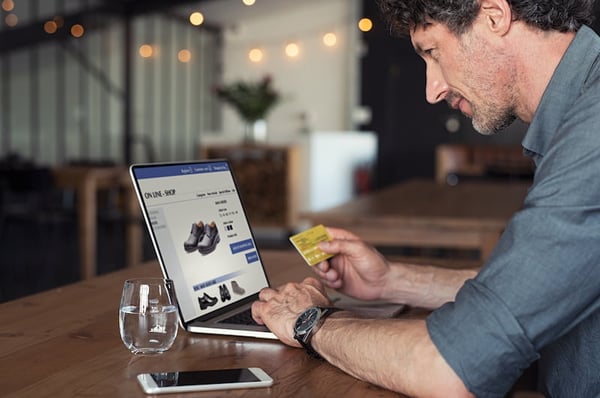The Seller Fulfilled Prime (SFP) program was an innovation that allowed brands to take ownership of Prime fulfillment, but it’s always been very difficult to successfully implement.
In early 2021 Amazon rolled out changes to SFP that made it even harder for brands to participate in the program. And more changes will be taking effect on June 1, 2021.
In today’s article, we have broken down the upcoming changes, how brands should consider pivoting, and how these SFP changes play into a bigger shift that’s occurring when it comes to Amazon’s fulfillment options.

What SFP changes came into effect earlier this year?
On Feb 1, 2021, Amazon rolled out the following SFP changes:
- Sellers enrolled in SFP are required to have nationwide delivery coverage for all standard-size products
- Sellers enrolled in SFP are required to use ship methods that support weekend delivery and pick up
- Sellers enrolled in SFP are required to meet targets for one-day and two-day delivery promises
What SFP changes will take effect on June 1st, 2021?
The upcoming changes are related to delivery promise timelines. The SFP Delivery Speed targets were rolled out on February 1, 2021, and will remain consistent until May 31, 2021:
However, on June 1, 2021, these SFP Delivery Speed targets will become even stricter:
Important: the above delivery speed targets refer to customer page views when your SFP offer is winning the Buy Box on your PDP, not sales.
How will these SFP changes impact brands selling on Amazon?
Many brands have experimented with the SFP in the past but quickly abandoned the program due to the strict shipping guidelines that are very difficult (especially for small businesses) to adhere to. A big complaint from many brands is that oftentimes shipping partners are the ones at fault for not hitting required SFP metrics, yet brands are the ones who have to deal with the consequences when Amazon customers receive late deliveries. These upcoming delivery promise updates may prove the final nail in the coffin for certain brands attempting to harness SFP.
Brands that are successfully using SFP should be considering the following things before June 1, 2021:
- Appraise your entire Amazon catalog. Remove SFP fulfillment for any products where the required delivery speed percentages will be too difficult to exceed.
- Shift more products over to FBA. This is often the more foolproof way to maintain Prime shipping eligibility vs SFP.
- Extend same-day shipping cut-off. Depending on what your fulfillment set-up looks like, pushing the shipping cut off to later in the day may allow you to get more shipments out the door (Amazon’s default setting is 2 pm)
- Ensure all of your Amazon products have the correct size and weight. This can change whether a product is considered standard or oversized, and it’s something you should be doing for your FBA products too.
- Consider implementing more sophisticated shipping and fulfillment management software tools. Such tools can help you get a better understanding of which products are suitable for SFP, and your overall profitability on Amazon.
Important: do not continue using SFP if you are unable to maintain these updated program metrics. Failure to comply with Amazon’s SFP guidelines may result in product listing suppression and/or account suspension.
Are these upcoming SFP updates part of a bigger shift?
Amazon has clearly identified an opportunity to expand their fulfillment network far beyond its current scope. In her Forbes article 6 Predictions For Amazon In 2021, Bobsled CEO Kiri Masters made the following prediction in relation to the SFP program:
“As a result of Amazon's increasing sophistication with shipping, I believe that they will also change up the Seller Fulfilled Prime program. In 2020 we saw increasing restrictions placed on this program that was already challenging to execute. If Amazon is destined to become the most reliable shipping carrier, we could see this program end entirely. Alternately, we could see SFP users be required to use Amazon shipping only, and SFP users actually become micro-fulfillment hubs for Amazon.”
Therefore, by essentially requiring sellers to offer next-day service across the country with these new SFP parameters, Amazon will drive more business to its fulfillment and logistics, helping set up a big play into the logistics and shipping space. This makes sense considering all of Amazon’s recent investments into bolstering their fleet capabilities.
🎧 To learn more, listen to Kiri’s recent conversation on MCM CommerceChat – Amazon Logistics: Ready for Prime Time?
Key takeaways for brands
- One and two-day shipping has become the new normal across all online marketplaces. If you aren’t offering fast shipping on ecommerce channels, you are likely falling far behind the competition.
- SFP is becoming even more difficult to manage. The easier option for most brands will be the FBA program. If you do wish to persevere with SFP, make sure you’re totally compliant with all the guidelines otherwise you will risk listing suppression or account suspension.
- Amazon is going to make more inroads into the fulfillment and shipping space, so if you’re going to spend money on your own fulfillment network, make sure you invest wisely. Many of Amazon’s service offerings are likely going to be white-label and/or hybrid shipping solutions. Making your own network as compatible as possible with Amazon’s is going to save you a lot of money over the long term.

Tagged: Amazon Account Management, Seller Central
.png)

